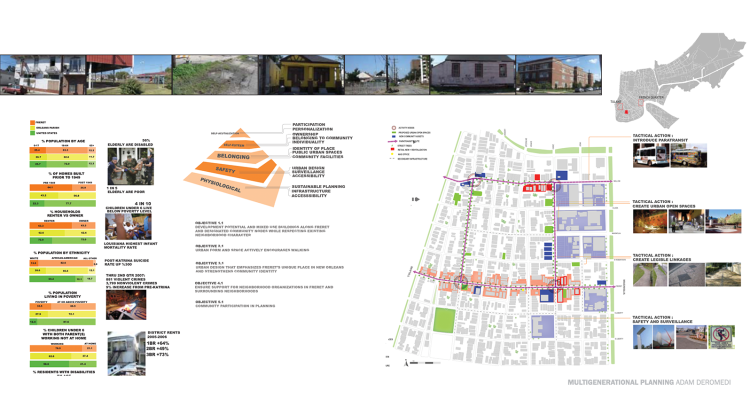Recovering New Orleans, 2007










In early September 2005, Hurricane Katrina caused catastrophic flooding that submerged about two-thirds of New Orleans, Louisiana. The disaster not only highlighted the immediate damage and human suffering but also exposed the disorganized response from city, state, and federal governments. This lack of coordination left New Orleans to devise its own neighborhood recovery policies in the years following the storm.
By the summer of 2007, recovery efforts were progressing slowly, with many neighborhoods still struggling with flood damage and pre-existing economic challenges. The city's population had decreased significantly, underscoring the urgent need for continued recovery efforts.
Between September and December 2007, the Harvard Graduate School of Design’s RECOVERING NEW ORLEANS studio addressed these challenges by developing urban planning strategies for three key neighborhoods: St. Roch, Treme/Lafitte, and Freret Street. These neighborhoods were part of seventeen “recovery clusters” identified by the City of New Orleans’ Office of Recovery Management (ORM) to focus investment and revitalization efforts.
The studio's work involved creating detailed recovery scenarios for each area, reflecting New Orleans' diverse physical and social fabric, including aspects such as public housing, open spaces, and mixed-use developments. The strategies balanced immediate recovery needs with long-term economic and environmental considerations, often leveraging incremental and market-driven approaches due to limited public resources.
The RECOVERING NEW ORLEANS project exemplifies how neighborhood-level revitalization efforts can be crucial to broader recovery strategies. The initiative was supported by Harvard University, local New Orleans institutions, and numerous individuals who contributed their expertise and insights.
This project underscores the importance of both localized and larger-scale strategies in addressing the multifaceted challenges of urban recovery and highlights the collaborative efforts required to revitalize communities affected by disaster.


